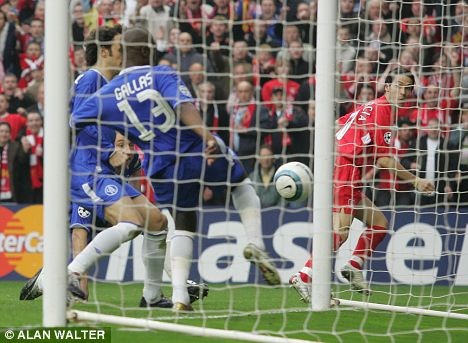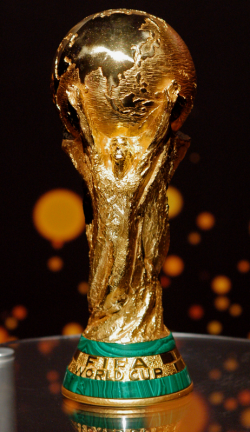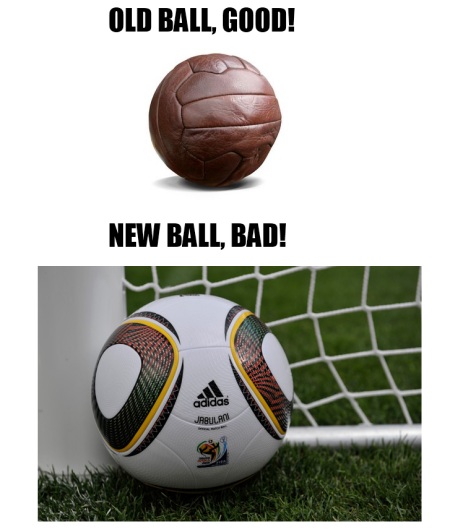There’s a myth out there that technology will ruin soccer, what Pelé (and others) once called “the beautiful game.” Let me ask you something: is this Cristiano Ronaldo free kick any less beautiful because he’s wearing the latest Nike boots? Do you have any idea how many hours are spent developing the technology that’s built into things like the Nike Mercurial Vapor Superfly II? Rest assured that Nike pays top-tier engineers a handsome wage to ensure that its boots are state-of-the-art. Should we take away Gonzalo Higauaín’s goal against Germany because he’s wearing Adidas TechFit? Or maybe we should cancel the World Cup altogether because players will be kicking around the Jabulani, a ball that Adidas’ engineers had been working on since the day after World Cup 2006? This fear of technology “ruining” soccer is not only unfounded, but it’s simply ignorant of the fact that technology has always been part of the beautiful game, and it always will be. Arguing that the sport needs to be kept “pure” should result in a direct red card. (See what I did there?)
As some of you may know, FIFA recently decided, at its regular meeting with soccer bigwigs in Zurich, that it won’t implement any form of goal line technology at this year’s World Cup, to be held in South Africa this June. Goal line technology—and there were two competing systems looking to gain FIFA’s seal of approval—would be used to help referees determine a goal’s validity. Not to get too “sporty,” but a goal in FIFA-sanctioned soccer matches is only valid if the entire ball crosses the goal line. Scenarios can arise when the ball only partially crosses the line—chaos ensues. Famous examples include a goal in the 1966 World Cup final between England and West Germany and a goal (pictured here, too) in the 2004-05 Champions League semi-final between Liverpool FC and Chelsea FC. (I’m sure a search for “disputed goals” will turn up many more examples.) In both cases, any form of goal line technology would be able to determine whether or not the ball had fully crossed the goal line, whether or not the goal should stand.

Thanks, Daily Mail!
It’s here that the anti-technology crowd begins to get nervous. “OK, so say Chelsea wanted to challenge that Liverpool goal. What, is the ref going to stop the game, killing its flow and momentum in the process, mosey on over to a video monitor on the sidelines, and spend several minutes reviewing the footage?” Nice Doomsday scenario, but who says it has to be so cumbersome involved? Why can’t there be a fifth official whose sole job is to monitor, say, a Hawk Eye video monitor? Once a goal is challenged, this fifth official can view the play in question, the tell the main referee using the magic of a wireless microphone, “Nope, no goal.”
Where in that chain of events does the integrity of the beautiful game break down, exactly? (And is that any more perverse than a family from Florida “buying” a club like Manchester United FC, only to saddle it with mountains of debt? Is it any more perverse than a team like Real Madrid CF taking advantage of favorable socio-economic connections to essentially buy trophies? Discussions for another day.)
Technology has always been a part of soccer—you can thank British engineering for creating the ships that carried the people who spread the sport around the world—and pretending otherwise won’t make it so. What were the original balls made of, crude leather? Those may have been fine in Pichichi’s day, but will we have to put asterisks next to the names of the top scorers of this year’s World Cup because they kicked the Adidas Jabulani into the back of the net and not a 12-inch diameter rock? Let’s cancel the Group Stage because all 32 teams are using kits developed by either Nike, Adidas, Puma, or whomever, kits that engineers spent years designing? In fact, let’s cancel the television coverage of the tournament—soccer can only be enjoyed, and should only be enjoyed, if you’re actually sitting in the stands!

Goal annulled, wearing fancy Adidas kit
What about that story of Adidas’ founder, at the time the German team’s equipment manager, outfitting Die Mannschaft with cutting-edge boots in the 1954 World Cup final against Hungary?
You ever watch the UEFA Champions League and wonder how they “know” how many kilometers this or that player has run? That’s ProZone, a technology that has been around for a few years. It helps managers analyze their players’ performances. “Look, Rooney, according to the data you’re running around entirely too much out there—you’re a striker not a mid-fielder. Try to hover inside the box more, and spend less time tracking back. Let the mid-field do its job; you do yours.” That conversation, apparently, should never happen, either.
People argue, “Well, it’s a sport played by humans, and should thus be officiated by humans, and not the cold, unforgiving hand of technology.” What? I swear, every single Sunday and Monday you can find articles in The Guardian, The Times, and The Daily Mail arguing that referees are incompetent blunderers and should be hounded out of the game for good. Howard Webb this, Mike Riley that. The Spanish sports paper As has created an entire word, villarato, describing the abhorrent (well, whatever Real Madrid consider it abhorrent, or whenever FC Barcelona benefit) referring in La Liga. How about, instead of putting such enormous pressure on referees, then freaking out beyond all reason when they make a “bad” call, we allow technology to come in and help then? Have you ever driven a car without power steering? How many of you even know how to drive a manual transmission car? Oh, I get it: technology is fine so long as it doesn’t interfere when Saturday comes, right?
Technology is here to help us, here to make gentle the life of the world. So let it help us!

